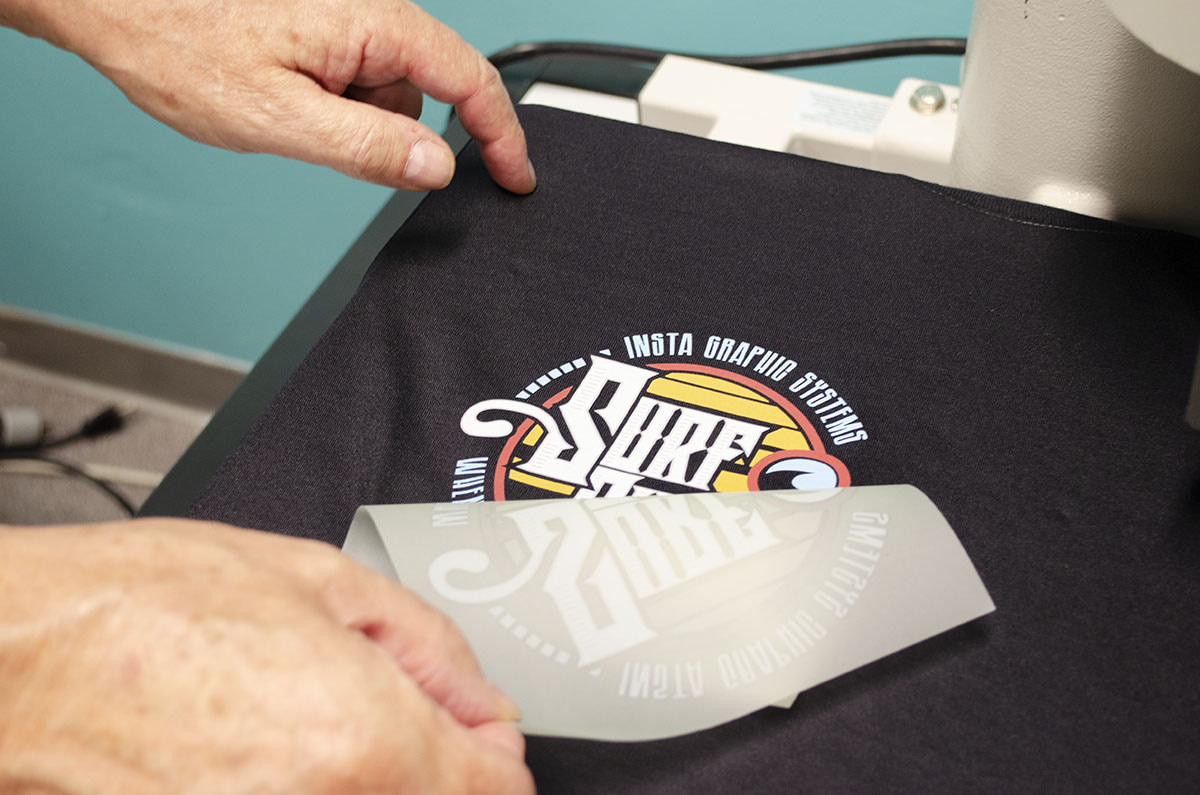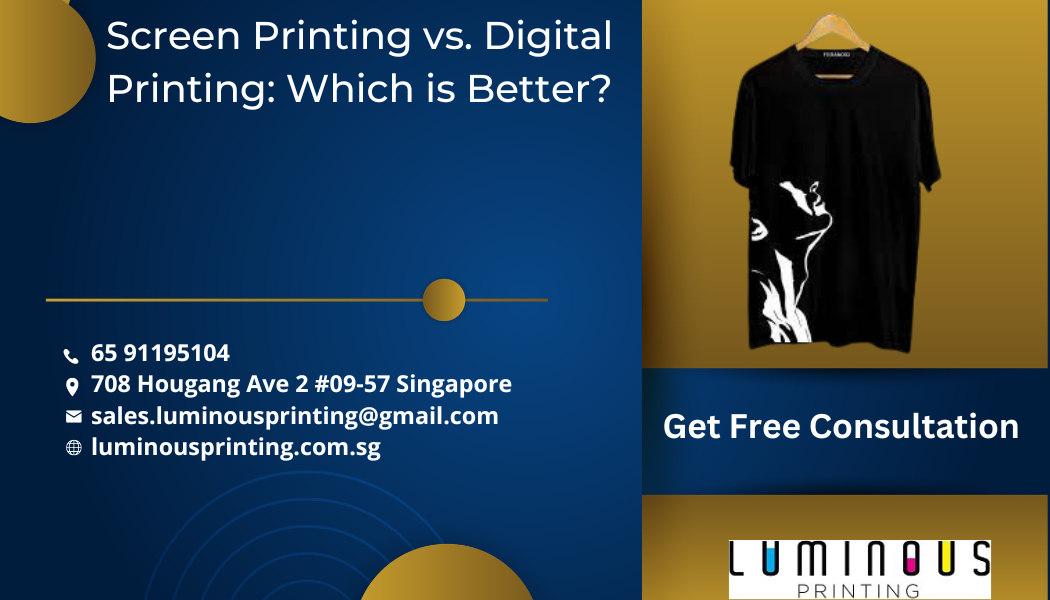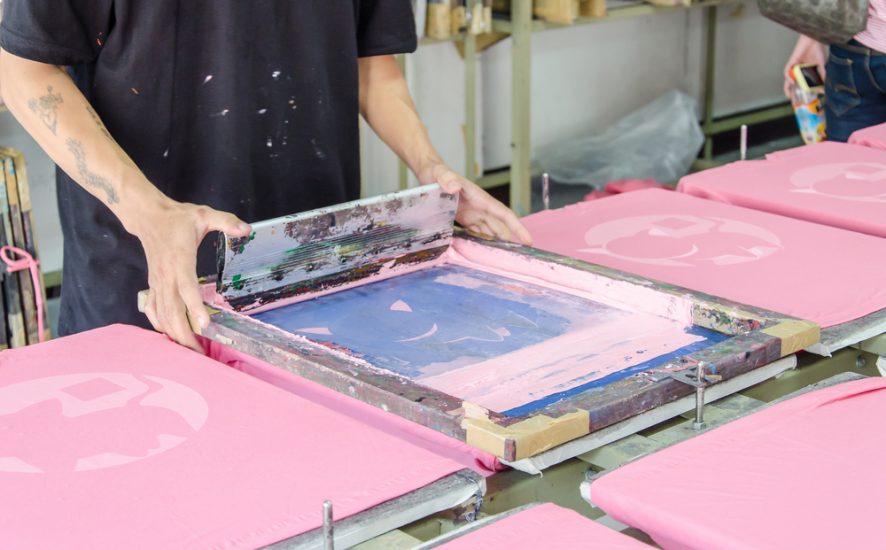Tx Tees Things To Know Before You Buy
The Tx Tees Ideas
Table of ContentsThe 25-Second Trick For Tx Tees8 Simple Techniques For Tx TeesOur Tx Tees PDFsThe 5-Second Trick For Tx TeesThe Tx Tees DiariesSome Known Details About Tx Tees The 3-Minute Rule for Tx Tees
That brings your total to approximately $1,900 gross and shipping. Build up other costs, like the variety of energies it takes to run the shop and the price of ink and emulsion per design. custom screen printing. Take the print listed below for example. This is a one-color picture, so the price of ink per t shirt is around 20 cents.The emulsion should only be a few cents since you 'd only require to layer one display for this task. Usually, printers attempt to make up to 45% revenue on a print task.

With DTF, you can publish a handful of t shirts, or just one. Use the very same calculator as the area above to calculate just how much revenue you 'd make utilizing DTF transfers. Compare the costs and profits to whichever approach speaks best to your arrangement and process. Both display printing and DTF have their specific niches in the world.
Tx Tees - Truths
The most effective means to recognize? Ask around and see what print shops like yours are doing. t-shirt printing. Try both out and see which you like much better
When you're picking what kind of printing approach to use for printing your artwork designs on your garments, it is necessary that you understand the distinctions in between these 2 strategies so you can maximize results while minimizing costs. Display printing is one of the most typically utilized method for printing styles on textiles.
DTG printing is also referred to as area or direct to garment printing because it prints only what is required rather than making a display as display printers do. https://moz.com/community/q/user/txtees02. Screen printing functions by screen filler squeegee display printing ink screen mesh screen, then moving the image to garment making use of warm and/or stress
The DTG printer uses unique dye-sublimation inks that are used into a pre-designed photo by a digital printing system. The inks come to be part of the fabric, permitting vibrant colors and exceptional detail. It's additionally referred to as area or straight to garment printing because it prints just what is needed instead of making a display as display printers do.
Excitement About Tx Tees
Initially, it's much quicker - you can publish a fullcolor photo in mins, as opposed to hours for screen printing. Second, there's no established time or costs involved - you can print any design you like, without having to create a screen first. Third, there's no waste - since display printers screen print one design at a time, they have to evaluate each shade independently.
The paper is really costly and can only be utilized once. Once it's printed on, it has actually to be discarded. - The first acquisition cost is lower than the upfront investment of DTG printers- You can publish multi-color layouts one screen at a time rather than needing to publish each color separately like DTG printing.

The Buzz on Tx Tees
Rather of making use of display mesh as screen printers do, dye sublimation printers utilize laser innovation to move your images onto garments or paper. A warm procedure moves the color from its solid-state straight right into the gas phase which in turn merges it onto material substratums when they are swiftly warmed to high temperatures under high pressure.
Sublimation printing is environment-friendly. It makes use of much less water than screenprinting, and due to the fact that it does not involve the use of dangerous solvents, it's secure for all kinds of apparel. The color sublimation inks are additionally odorless when cured, unlike screen printers that use harmful chemicals during the screen printing process that leave an undesirable smell.
They additionally conserve cash on expensive devices like exposure systems because dye sublimation printers don't require a UV direct exposure device or a flash treatment stove that is normally utilized in screen printing (embroidery shop). What is straight to garment printing (DTG Printing)? DTG printing is a digital screenprinting process that publishes straight onto material utilizing specialized inkjet printers
Tx Tees Fundamentals Explained
DTG printing provides several benefits over traditional screenprinting, consisting of the ability to publish photographic top quality pictures, greater shade vibrancy, and the ability to publish designs on darker materials. DTG printers work by heating the textile ink till it turns right into a gas. The gas then penetrates the fabric, bonding with the fibers to develop a permanent print.

Display printers just prepare their screen then start publishing till they lack product or ink.- There is a large range of experienced display printers throughout the world, which can be valuable for novices. - It's a slower process - display printers commonly have to wait for the ink to completely dry prior to they can print the following shade- Screen printers call for hand-operated labor, so there's a higher knowing curve and it takes longer to produce a high-quality design- Display printing isn't as exact as DTG printing, so you may obtain some "blood loss" of colors from one component of the picture onto another otherwise done appropriately.
The 10-Second Trick For Tx Tees
Nonetheless, rather than utilizing screen mesh as display printers do, dye sublimation printers make use of laser innovation to move your pictures onto garments or paper. A warmth process transfers the color from its solid-state straight into the gas phase which subsequently fuses it onto material substratums when they are rapidly heated up to heats under high pressure.
Sublimation printing is environment-friendly. It makes use of less water than screenprinting, and since it does not involve making use of dangerous solvents, it's safe for all kinds of clothing. The color sublimation inks are likewise unsmelling when treated, unlike display printers that make use of unsafe chemicals during the screen printing process that leave an undesirable odor.
They likewise conserve money on pricey equipment like direct exposure units considering that dye sublimation printers do not require a UV exposure system or blog a flash cure stove that is usually made use of in display printing. What is direct to garment printing (DTG Printing)? DTG printing is a digital screenprinting procedure that prints directly onto textile making use of specialized inkjet printers.
The 2-Minute Rule for Tx Tees
DTG printing uses several advantages over standard screenprinting, including the capacity to print photo top quality pictures, better color vibrancy, and the capacity to print styles on darker fabrics. DTG printers work by heating up the textile ink until it becomes a gas. The gas then permeates the fabric, bonding with the fibers to create an irreversible print.